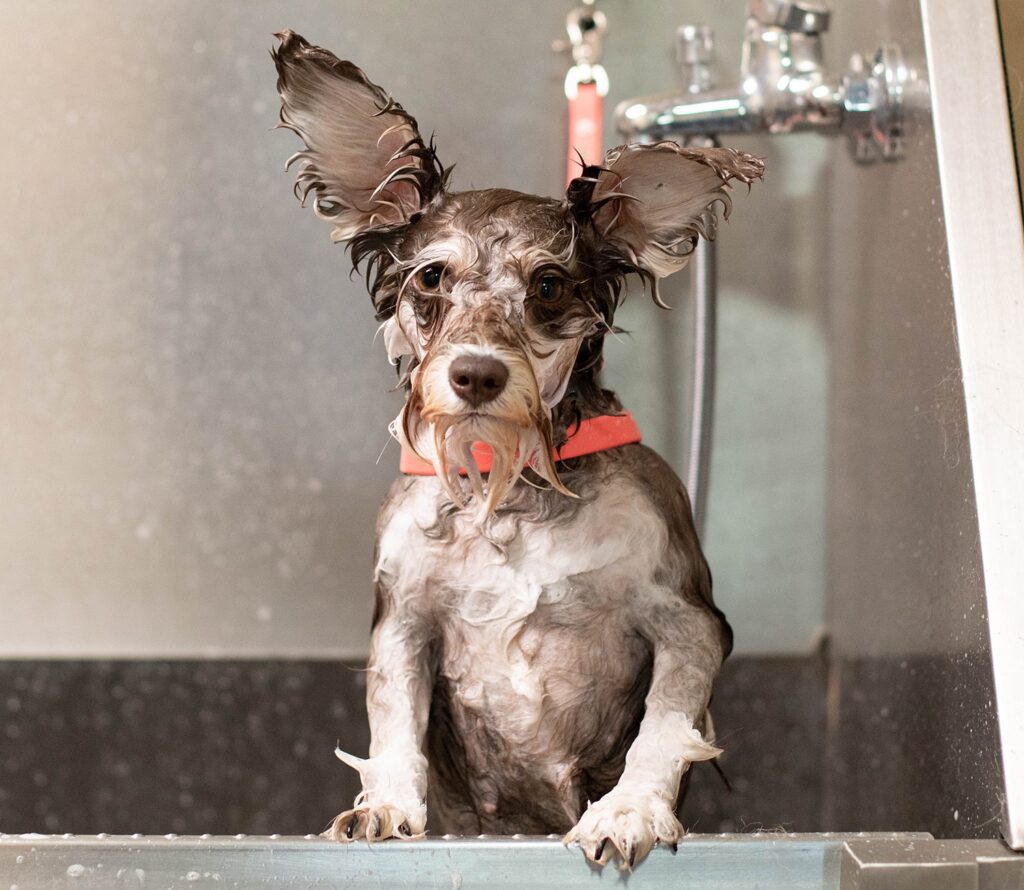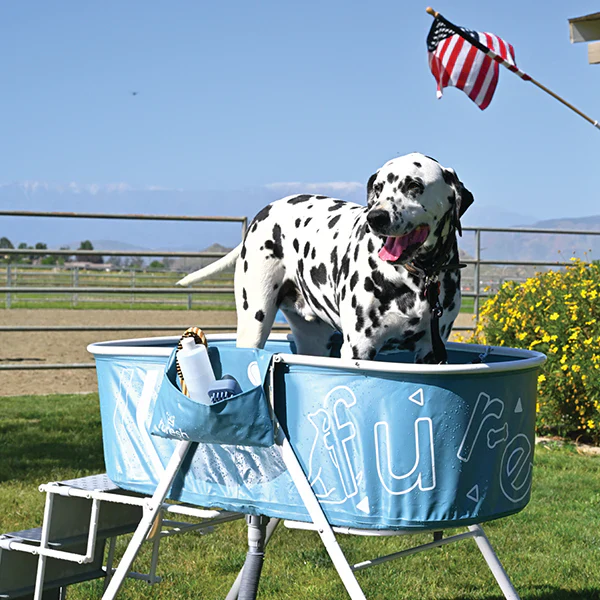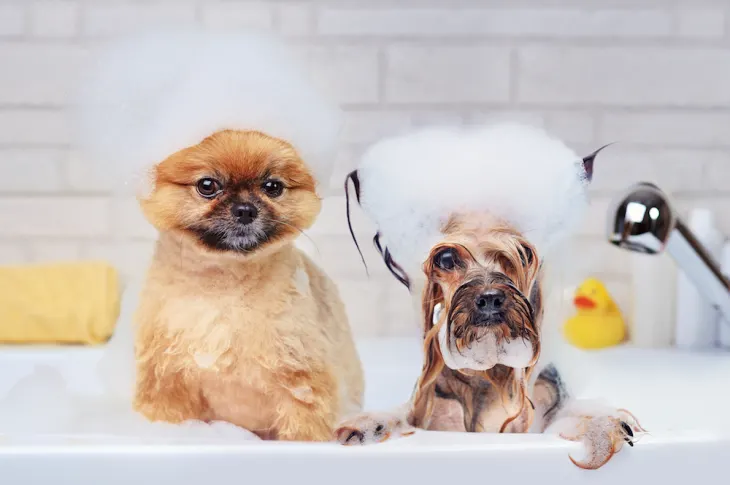Understanding how to bathe your dog properly is helpful for all pet parents—even if you typically rely on professional dog grooming services. Unexpected situations, like your pup rolling in something unpleasant, can happen at any time. Being prepared ensures your dog stays clean, healthy, and happy between visits to your mobile dog grooming salon.
Regardless of breed, size, or coat length, every dog benefits from regular baths.
As a professional groomer with years of experience, I’m here to guide you through the dog bathing process, from preparation to post-bath care.
Preparing for Your Dog’s Bath
Choosing the Right Bathing Spot
Depending on your dog’s size and your home’s layout, here are some great options for bath time:
- Kitchen Sink: Ideal for small breeds and puppies.
- Bathtub or Shower: Perfect for medium or large dogs—add a dog bath tub insert for comfort and safety.
- Outdoor Bathing: Great in warmer months; use a secure tie-out and sprayer.
- Self-Service Dog Wash Stations: Found at some pet stores; they include everything you need for a mess-free clean.
Keeping Your Dog Calm
A calm dog makes the whole experience smoother. Use a lick mat with peanut butter, talk softly, and reward frequently. One trick we use at Barks in the Bay Mobile Grooming—let the dog step into the bathing zone on their own. Giving them that choice helps ease nerves and makes bath time feel less forced.

Supplies You’ll Need for Bathing Your Dog
Be prepared with these essentials:
- Dog shampoo – Choose one suited for coat type or sensitive skin (e.g., hypoallergenic or vet-recommended medicated shampoo).
- Dog conditioner (optional) – Helps with tangles and moisturizing.
- Detangling spray (optional) – Eases brushing and adds shine.
- Cotton balls – Prevent water from entering ears.
- Dog Brush or comb – For pre- and post-bath grooming.
- High velocity dryer or towels – For efficient, comfortable drying.
- Massage gloves – Help shampoo reach the undercoat.
- Ear cleaner (optional) – Keep ears clean and healthy.
- Dog toothbrush and toothpaste (optional) – Great time to freshen up breath.
- Treats – Lots of them!
- Nail clippers (optional) – Easier to trim after a bath.
👉 Pro tip: Always read your shampoo bottle’s instructions. Some need to be diluted before use to avoid skin irritation.
How to Bathe Your Dog: Step-by-Step
- Brush your dog to remove mats—wet mats tighten and get worse.
- Secure your dog with a leash or tether.
- Insert cotton balls in the ears to protect against moisture.
- Wet the coat thoroughly with lukewarm water. Hold the nozzle close to the skin, starting at the rear. Wet the head last—shield their nose and eyes with your hand if needed.
- Apply shampoo – At Barks in the Bay, we shampoo and bathe your dog twice:
- First dog wash: removes dirt and oil
- Second dog wash: creates lather and fully cleans
Massage the shampoo gently and evenly across the body using massage gloves for a calming, spa-like experience.
- Rinse thoroughly – Especially under the belly, around the armpits, and near the tail. Use your hands to feel for leftover suds.
- Apply conditioner (if using) – Rinse thoroughly again.
- Dry your dog – Towel dry first, then use a cool setting on a blow dryer or a high velocity dryer for faster drying and less shedding.
- Brush again – Once dry, brushing helps detangle and smooth the coat.
- Clean ears and trim nails (if needed) – Nails are softer post-bath.
- Reward your pup! – A treat, a belly rub, or their favorite toy reinforces a positive bath experience.

How Often Should You Bathe Your Dog?
Bath frequency depends on your dog’s breed, coat, and lifestyle:
- Short-haired breeds: Every 6–8 weeks
- Long-haired breeds: Every 4–6 weeks
- Active or outdoor dogs: More frequent baths
- Skin conditions: Follow vet’s recommendations
Avoid over-bathing—excess washing can strip natural oils and dry out skin. Use gentle, moisturizing products if you need to bathe more often.
Why Bathing Your Dog Is Important
Regular bathing isn’t just about smelling good:
- Removes dirt, allergens, and bacteria
- Controls shedding and loose fur
- Helps you spot fleas, ticks, skin issues, or lumps early
- Keeps skin and coat healthy
- Gives your pup that fresh, snuggly feeling!

